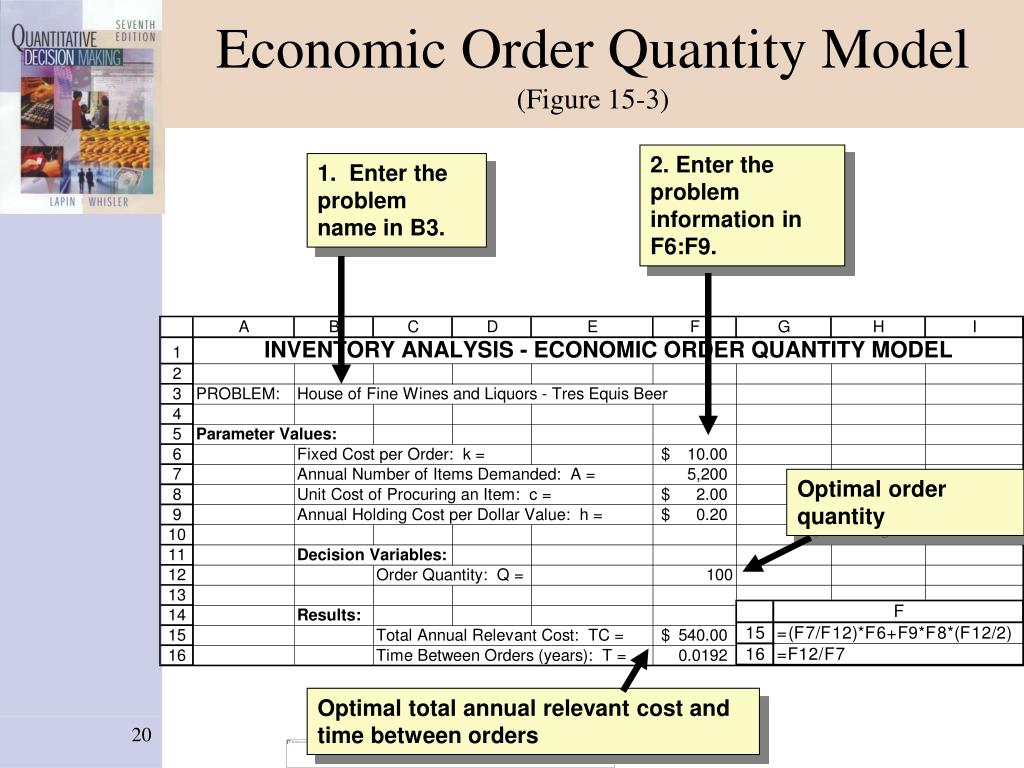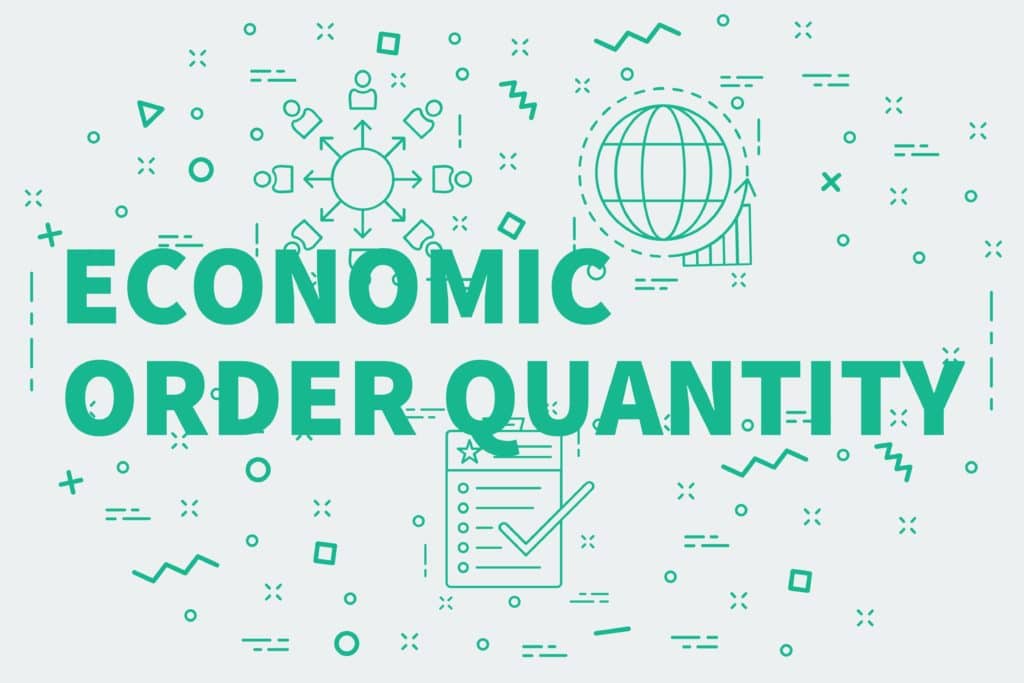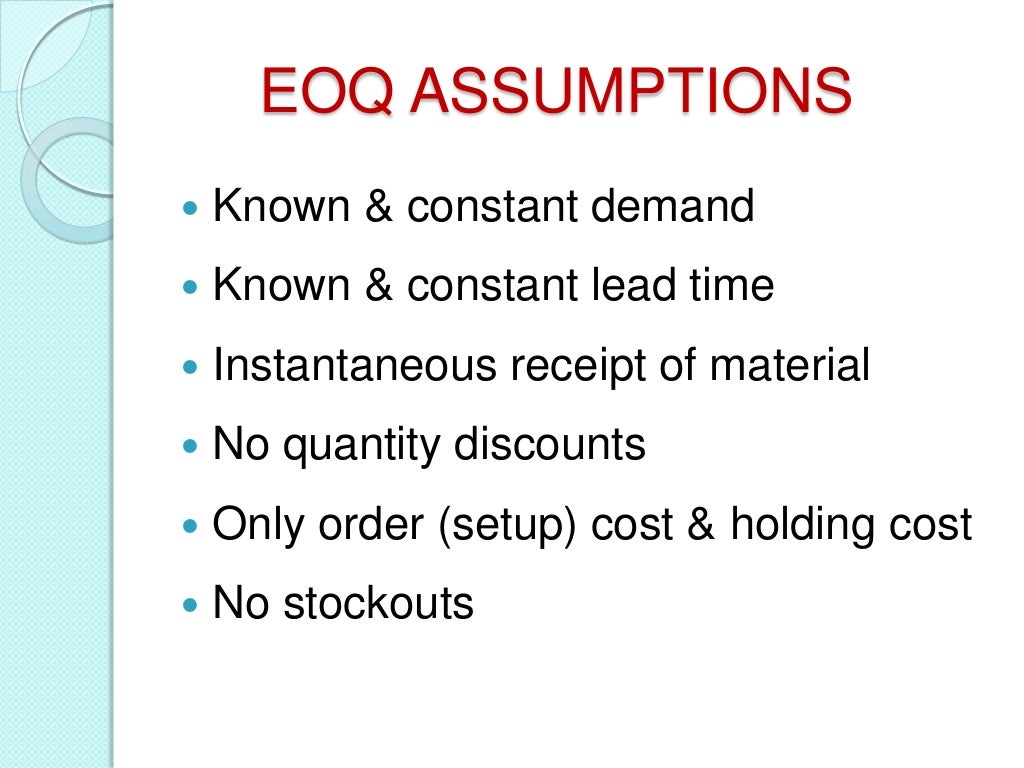

The Economic Order Quantity (EOQ) is an inventory management system that ensures a company orders the right amount of inventory that meets the demand for the product. When a business orders less inventory than its customers demand, it can easily lose out on customers who will go elsewhere for the product. Also, it leads to high holding costs as the inventory tends to spend a long time in the warehouse since the supply exceeds demand for the product. When a business orders more inventory than it has demand for, it leads to high ordering costs as the company spends more of its cash flow on inventory. It faces a carrying cost of 10% of a unit cost.One of the biggest problems that affect the profitability of a business is balancing its inventory orders with the demand for the inventory in the marketplace. It costs the company $1,000 for every order placed and $250 per unit of the product. It is shown as follows:įor example, a company faces an annual demand of 2,000 units. To find the optimal quantity that minimizes this cost, the annual total cost is differentiated with respect to Q.


Summing the two costs together gives the annual total cost of orders. Total Cost and the Economic Order Quantity

When inventory reaches zero, an order is placed and replenishes inventory as shown:Īs such, the holding cost of the inventory is calculated by finding the sum product of the inventory at any instant and the holding cost per unit. With the assumption that demand is constant, the quantity of stock can be seen to be depleting at a constant rate over time. As such, the holding cost per unit is often expressed as the cost per unit multiplied by the interest rate, expressed as follows: H = iC This cost can be in the form of direct costs incurred by financing the storage of said inventory or the opportunity cost of holding inventory instead of investing the money elsewhere. Holding inventory often comes with its own costs. The formula can be expressed as:įor each order with a fixed cost that is independent of the number of units, S, the annual ordering cost is found by multiplying the number of orders by this fixed cost. The number of orders that occur annually can be found by dividing the annual demand by the volume per order. I: Carrying Cost (Interest Rate) Ordering Cost The key notations in understanding the EOQ formula are as follows: The components of the formula that make up the total cost per order are the cost of holding inventory and the cost of ordering that inventory. The Economic Order Quantity formula is calculated by minimizing the total cost per order by setting the first-order derivative to zero. EOQ is the exact point that minimizes both of these inversely related costs. However, as the size of inventory grows, the cost of holding the inventory rises. The cost of ordering inventory falls with the increase in ordering volume due to purchasing on economies of scale. The Economic Order Quantity is a set point designed to help companies minimize the cost of ordering and holding inventory. In essence, EOQ is a tool used to determine the volume and frequency of orders required to satisfy a given level of demand while minimizing the cost per order. It is a measurement used in the field of Operations, Logistics, and Supply Management.


 0 kommentar(er)
0 kommentar(er)
